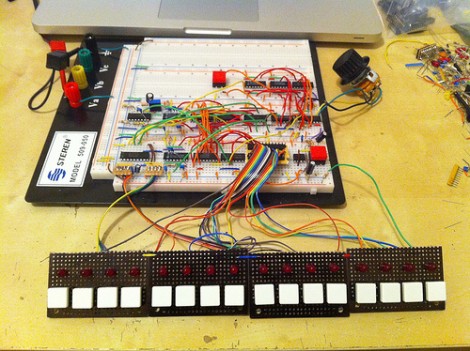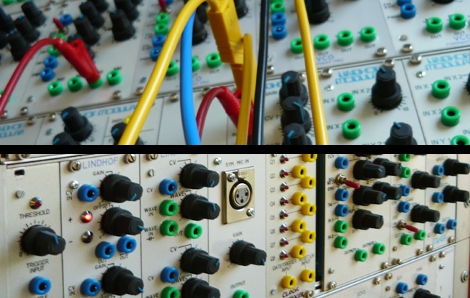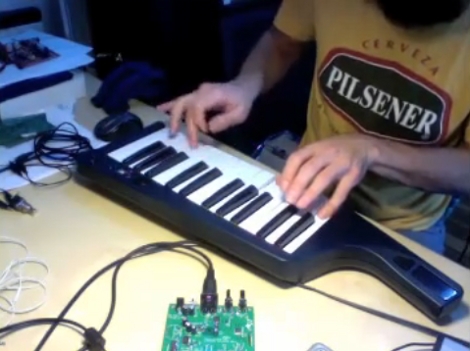
[Charles Gershom] has been tinkering around with his keyboard and Arduino in order to build his own version of a MIDI controlled synthesizer. It looks like he’s gutted the enclosure of some commercially available MIDI hardware to use for the project. This works nicely since it gives him both the MIDI and audio jacks that he needs. The box also provides a nice control surface where a set of four LEDs indicates the synth mode currently in use. There are also four potentiometers mounted on the panel, but they’re not yet up and running.
Check out the video after the break to see what this can do so far. [Charles] shows the device synthesizing sounds coming in from the keyboard. It is also used to playback the audio from Super Mario Bros. which is fed in by a music notation program on a computer. Only one voice is playing when this happens which makes us think this can only handle one channel at a time right now (but we could be wrong).
















